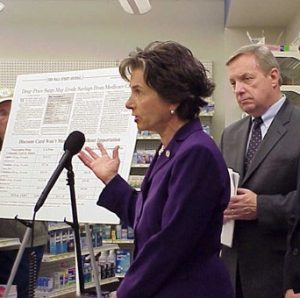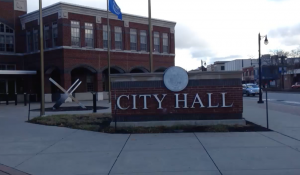As part of a broader 1 percent increase to education funding in a budget proposal characterized by deep cuts, Gov. Pat Quinn said he’d like to see an additional $50 million of funding for college scholarships in hopes of getting more Illinoisans into jobs.
“Jobs follow brainpower,” said Quinn in his Feb. 22 budget address, “That’s why this budget invests more in education from birth to university.”

Quinn sees an investment in need-based financial assistance as a way to get more people job-ready, said Charles Wheeler, associate professor of public affairs reporting at University Illinois at Springfield.
Quinn’s proposal is aimed at helping Illinois residents better qualify for future jobs. According to one Ilinois-focused report by the national group Complete College America, there is a 24 percent gap between the kinds of jobs that will be created over the next decade and the kind of education that an average Illinois resident has. By 2020, 67 percent of Illinois jobs will require a career certificate or college degree, which only 43 percent of Illinoisans currently hold, according to the report.
The proposed scholarships would increase add to the number of existing grants awarded by the state to students with financial need attending accredited schools.
“That will make a huge difference for our students,” said Phil Burdick, spokesperson for Harper Community College in Palatine.
Burdick explained that although Harper awarded $2.4 million in so-called MAP grants to nearly 2,000 students, there weren’t enough grants available to help every eligible student. Monetary Assistance Program grants are awarded by the state to college students based on their financial need. Students do not repay the MAP grants. Harper currently has over 26,000 students, making it one of the largest community colleges in the state.
Without additional funding, the MAP grants are all awarded by the beginning of the fall semester, said Burdick. Which is a problem for community colleges, said Burdick, since many of their students start taking classes in the spring or summer semesters.
Statewide, about 150,000 students received MAP grants last year, said Wheeler.
The same number of students was qualified for, but unable to receive aid because the state ran out of money, said Wheeler.
Last year, because the program was running out of money, students receiving MAP grants saw a 5 percent cut to their scholarships in the spring semester, according to a letter sent to students from the Illinois Student Assistance Commission. The maximum help students could receive dropped by about $300.
Quinn’s proposal to increase MAP grant funding could have a chance of passing, said Wheeler, since similar increases have passed the General Assembly before.
In December 2011, the General Assembly passed emergency legislation giving the MAP grant program an extra $33 million to prevent further cuts to student aid.
Also, while legislators are currently debating the continued existence of corruption-plagued legislative scholarships, MAP grants offer a way for legislators to invest in their constituents and districts– but without the scandal of legislative scholarships, said Wheeler.
“I believe that MAP grants are popular because they’re based on need,” said Wheeler. “It’s not about who you know or how you’re connected as in the case of legislative scholarships.”
Related articles
- Quinn Seeks To Invest $50 Million In State Scholarship Program (chicago.cbslocal.com)
- Quinn’s Budget Proposal Delivers Deep Cuts (chicagoist.com)












Be First to Comment